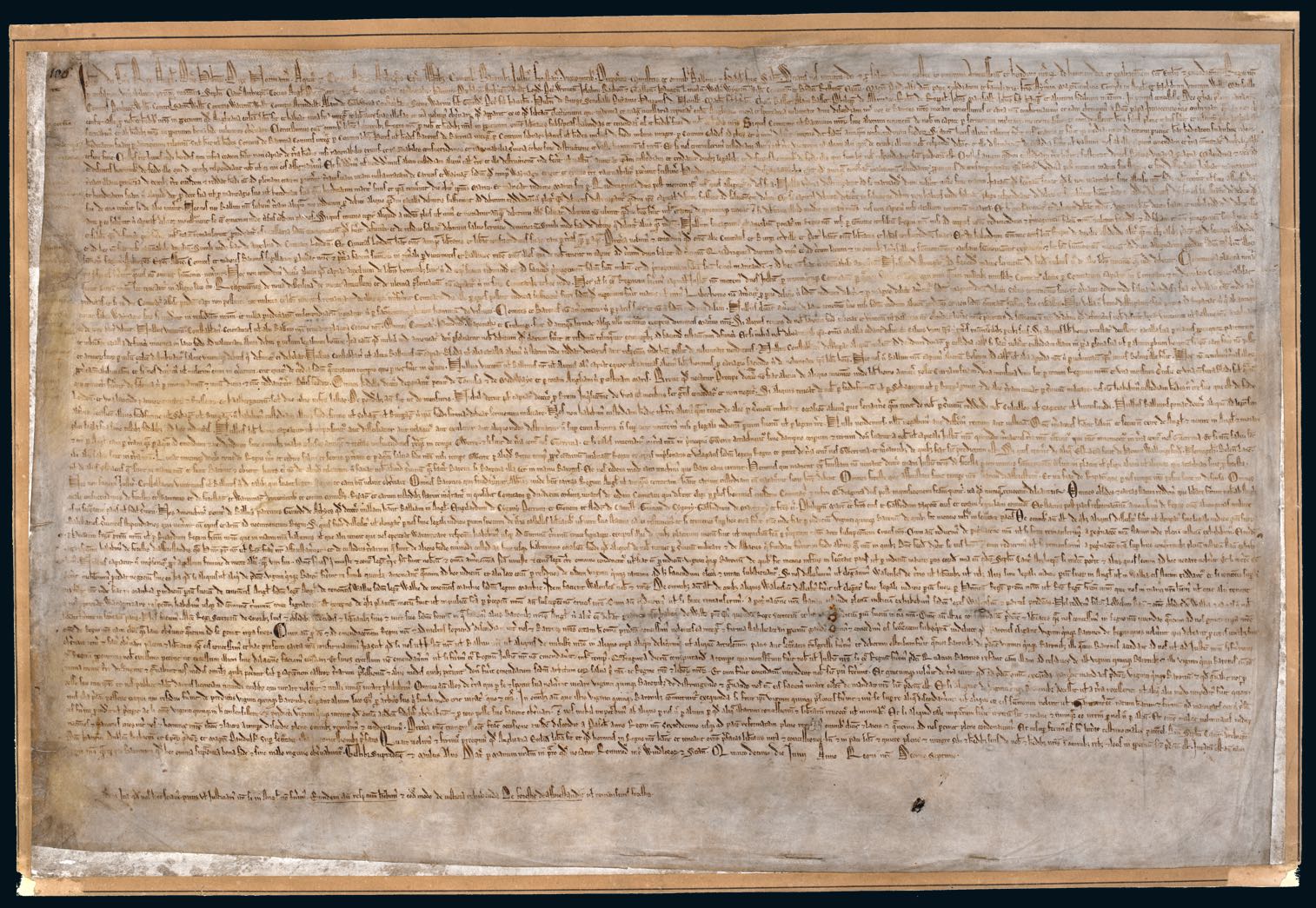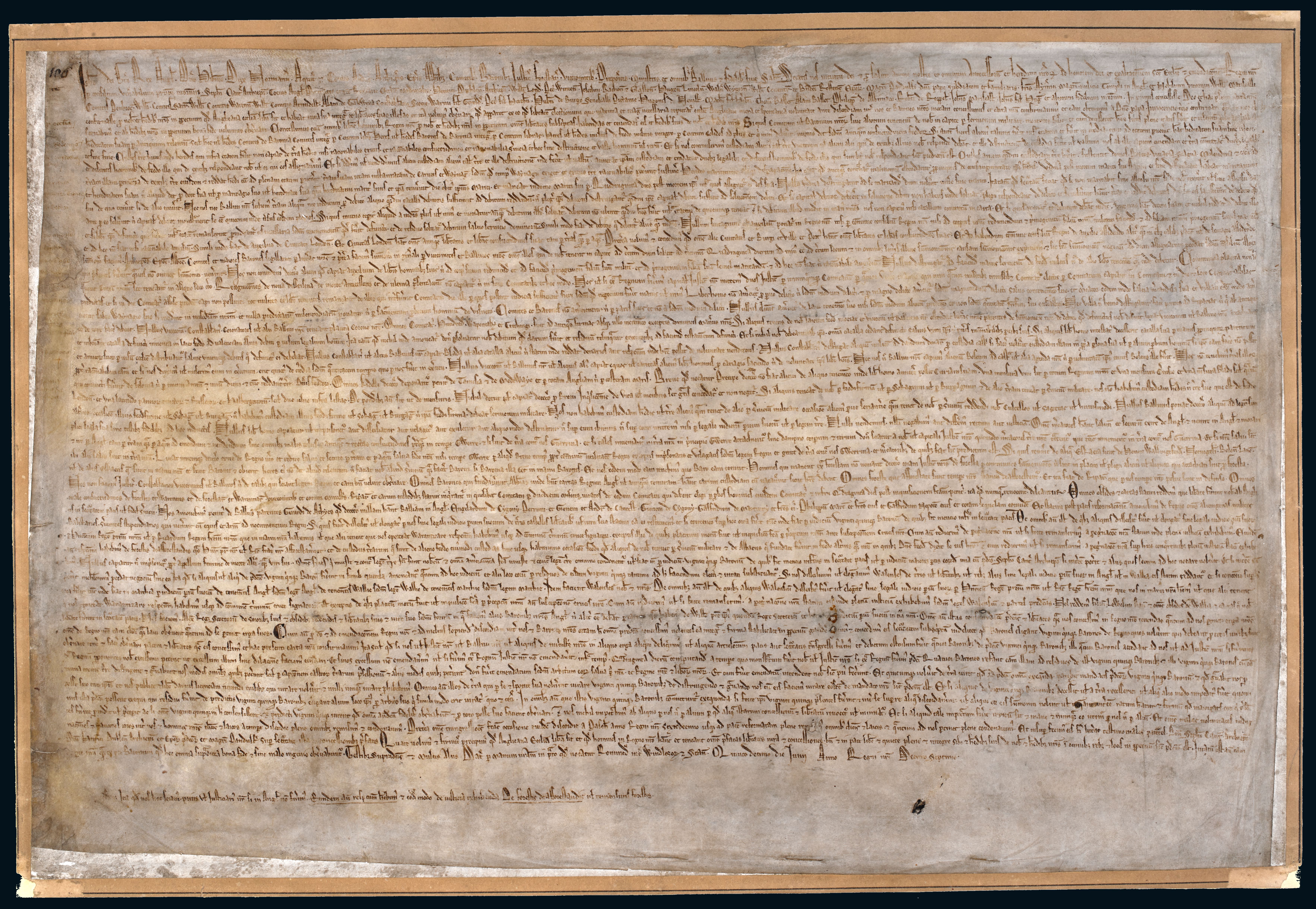
Nullus liber homo capiatur vel imprisonetur aut disseisiatur aut utlagetur aut exuletur aut aliquo modo destruatur, nec super eum ibimus nec super eum mittemus nisi per legale iudicium parium suorum vel per legem terre.
No free man shall be seized or imprisoned, or stripped of his rights or possessions, or outlawed or exiled, or deprived of his standing in any other way, nor will we proceed with force against him, or send others to do so, except by the lawful judgement of his equals or by the law of the land.
